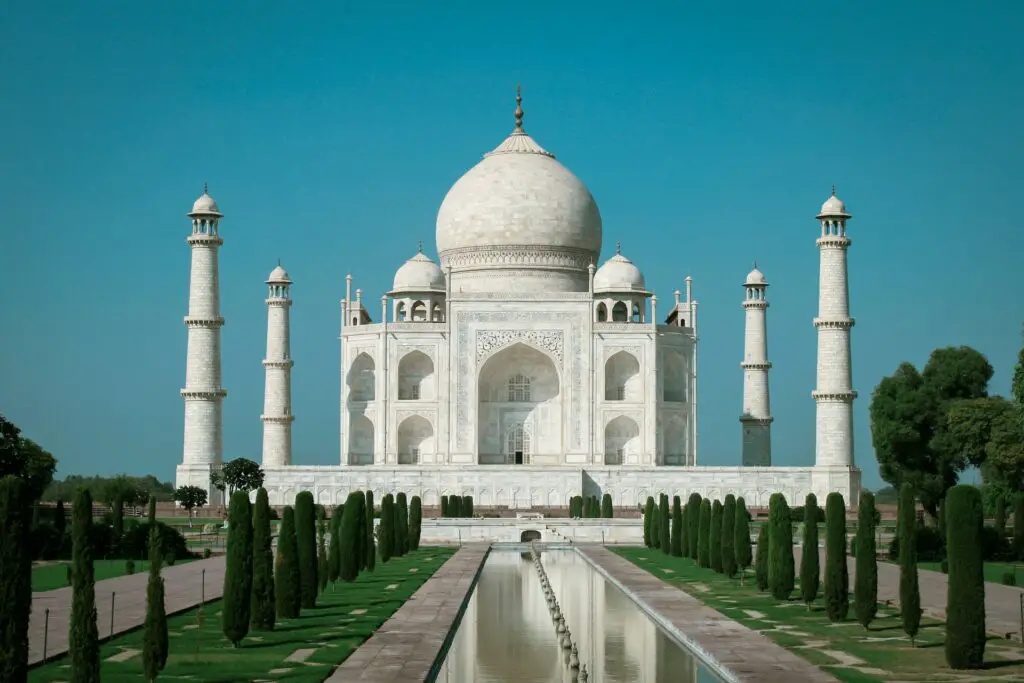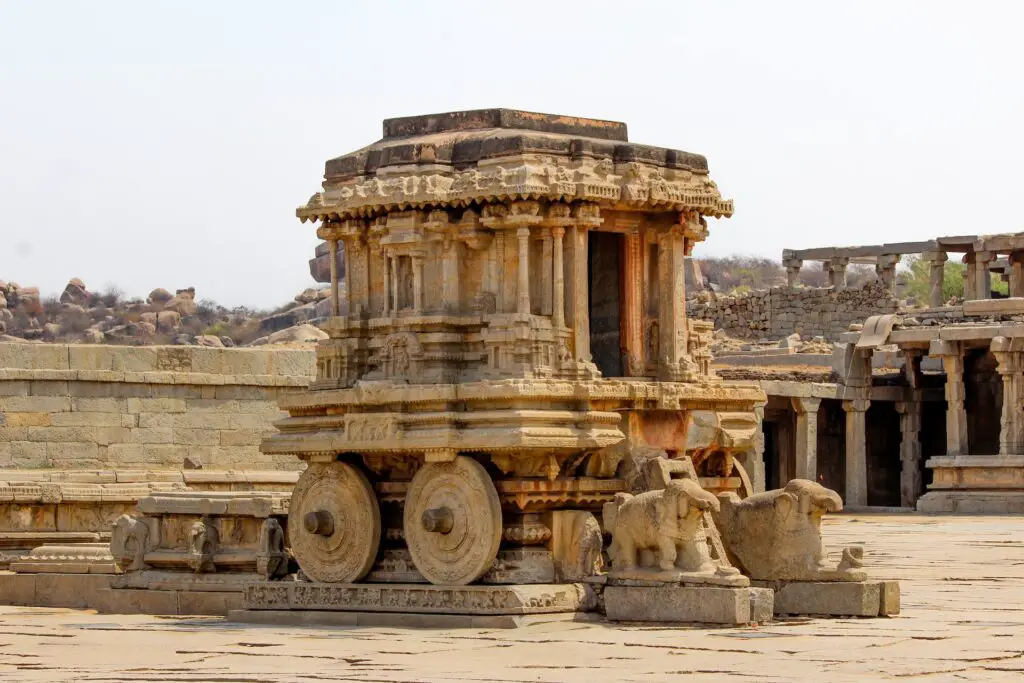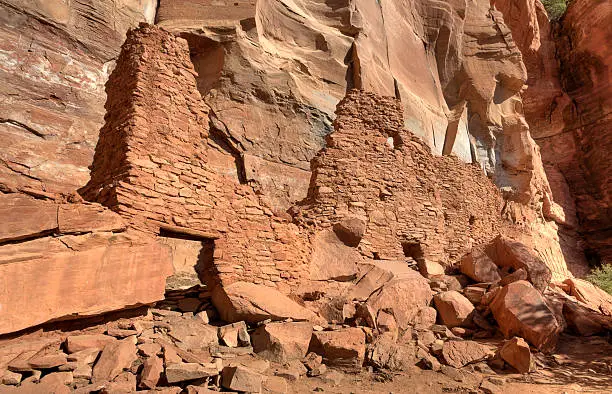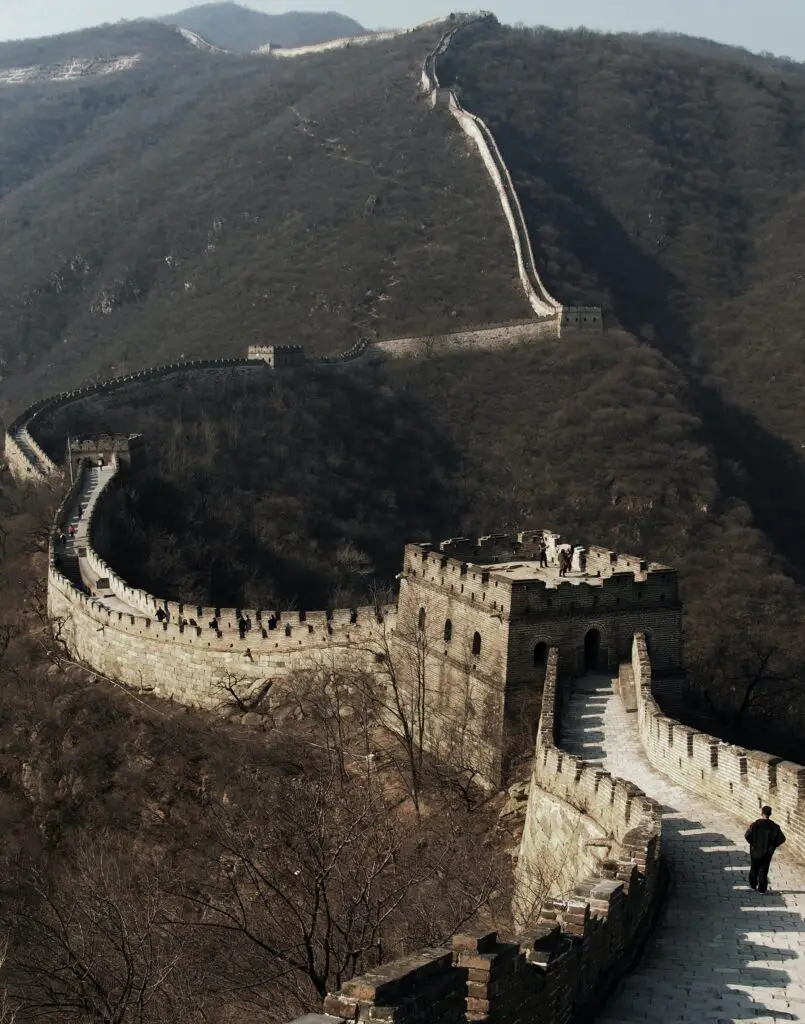The 15th-century Inca citadel of Machu Picchu was located in the Eastern Cordillera of southern Peru on above the 2,430-metre mountain ridge. Most popularly called as “Lost City of the Incas” and considered as the most familiar iconic landmark of the Inca World. The site was built in the classical Inca style, with polished dry-stone walls. Later it is composed of over 150 buildings ranging from baths and houses to temples and sanctuaries.
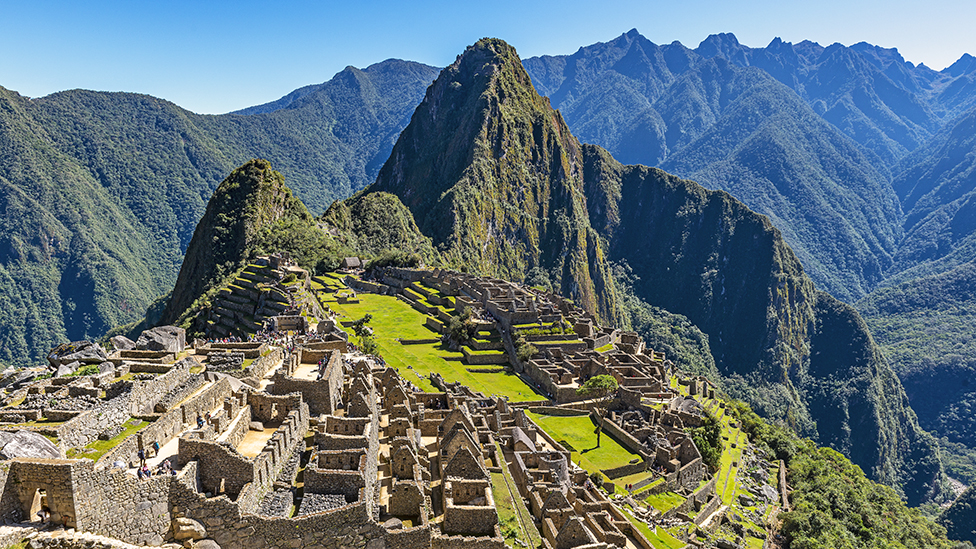
Read more; Living Heritage of Indian Golden Era; Hampi.
History of Machu Picchu
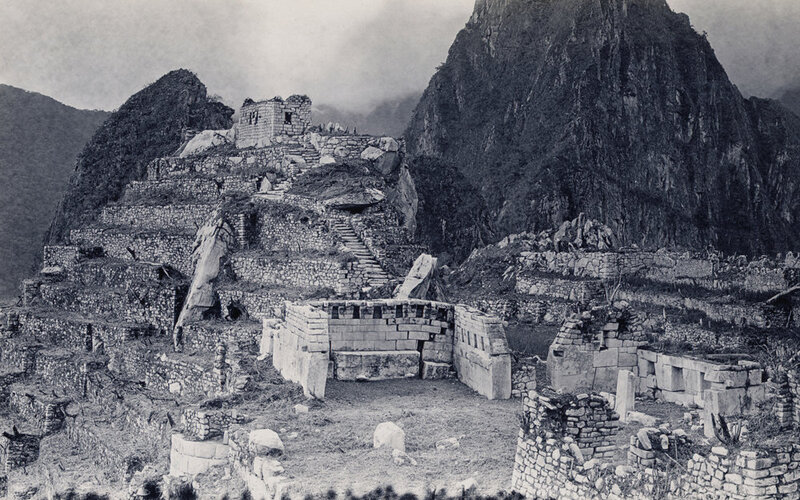
Machu Picchu has a very long historical background, showcasing incredible historical evidences like buildings, architectures and evidences. As we know, such a great ancient site was built by the Inca peoples around 1450 AD, after that we do not have any clue about accurate data to show its historical backgrounds until 15th century. So, researchers and scholars are believed that almost during the 15th century onwards they presented exact historical information.
As per data, till 1450 AD the site was abandoned as an official site for the Inca rulers a century, after when the Spanish Conquered stepped into Peru.
15th Century: “Lost city of the Incas” built high up on the Eastern Cordillera of southern Peru on above the 2,430-metre mountain ridge. During the 15th century already 1,000 peoples were housed there.
16th Century: In this period most of the Inca sites were destroyed by the Spanish Conquests and some of the Inca rulers were abandoned.
1911: This year is considered as the most blessed and prosperous year when it comes to Machu Picchu’s popularity. Yale Professor Hiram Bingham III rediscovered Inca city and its ruins. During his archaeological survey he found removed ceramic vessels, silver statues, jewelry, and human bones took back his university for more research.
1913: Entire site is dedicated to the National Geographic Society.
1954: ‘Secret of Inca’ famous film made by the Hollywood studio on location in order to provide employment to around 500 indigenous tribal peoples. Motorcycle Diaries and Sundial were also made here.
1980: Recognized as one of the UNESCO World Heritage sites and declared as Peruvian historical sanctuary.
2003: Machu Picchu received 4,00,000 visitors a year (first time its history receives such a massive tourist traffic).
2007: Listed in the New 7 Wonders of the World.
2008: Listed one of the 100 most endangered sites after the details study of environmental degradation reports given by the World monument fund. Therefore, the Govt of Peru and UNESCO World Heritage site limit the daily visitor’s up to 2,500 per day.
2010: Mudslides trapped thousands of tourists and locals due to heavy rainfall and washed away railway and roads.
Medibank Slogan- Logo and Taglines.
Top 5 Things to Do in Machu Picchu
1. Explore Its Breathtaking Sun Gate/ Inti Punku

It is really a great idea to start your Machu Picchu tour in order to visiting its breathtaking Sun Gate. Often called as Inti Punku, main entrance of the Machu Picchu where visitors or adventure trekkers enter through this Gate to citadel and Inca Trail. Moreover, exploring Inti Punku offers landmarks with perfect panoramic views of Machu Picchu, Incha trails and surrounding mountain ranges. Once you reach the top of this Gate, surely you have caught up with Citadel, Huayna Picchu and other photographic picture points.
Despite being an entry point to Inca Trail, Inti Punku is located on the eastern side of the site where visitors spot the first morning light of the Sun. Witnessing the Sun is a strong spiritual thing to Incas and they believed light has a strong and positive power and important factor to enjoy. There are plenty of advantages waiting to you to explore if you dare to hike its top such as chinchillas, Andean foxes and Illamas.
2. Climb Huayna Picchu
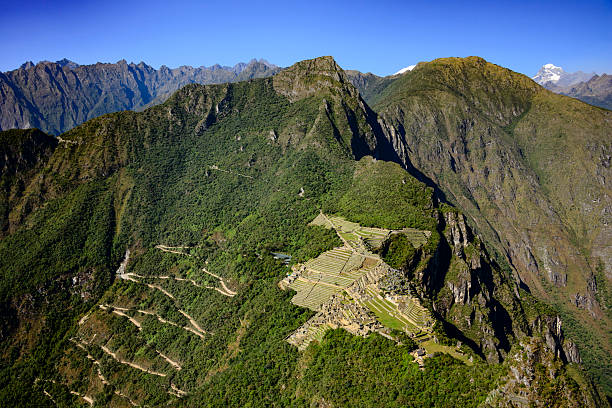
Another renowned place to get an extraordinary view in Machu Picchu is Huayna Picchu. It is a popular mountain range always overlooking Citadel making it a great destination for hikers and photo lovers. It is a doom shaped mountain peak rising behind the Inca Citadel and surrounded by the Urubamba River and Citadel of Machu Picchu making it a challenging hiking trail in the entire Machu Picchu region. Usually hikers dedicate their precious one or one and a half hour to reach its summit to get stunning views over the ruins of Incas.
Road filled with sacred rocks, where you will spot dense vegetation, granite stairs and narrow paths. Do not forget to look at some of the major attractions throughout your hiking journey such as The Temple of the Moon, Sanctuary, Hiram Bingham and Tahuantinsuyo. Climbing Huayna Picchu has some entry fees and a daily limit of 200 people. Make sure that entrance fees are mandatory which we can purchase well in advance at the entrance of Citadel.
3. Visit the Temple of the Sun
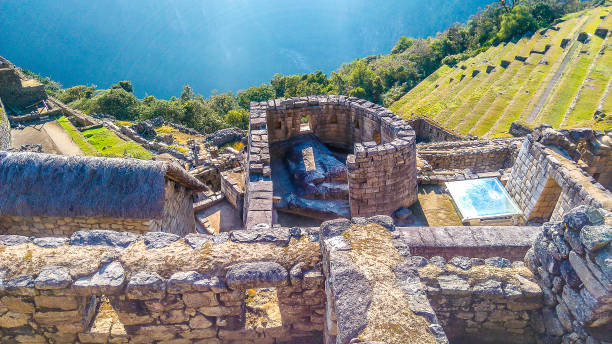
Most sacred temple, Temple of the Sun built according to the revered structure within the Incan Citadel. Situated high in the Andes Mountains of Peru, Temple of the Sun is well known for its brilliant architectures made by the precise alignment with astronomical phenomena. The primary purpose of building this unique temple is to serve as a ceremonial and astronomical observatory for Inca civilization. Sun is the temple’s main deity and has deep connections to the Inca’s people and their beliefs.
Its architectural structure is purely aligned with movements of sun, agriculture and ceremonial dates. If you visit during festival events you are more fortunate to find sacred objects and artefacts that exhibit local cultures, spiritual and religious practices. But the sad part of your Temple of the Sun tour is not allowed to visit inside of this temple. Currently not accessible to visitors and only eligible to explore outer beauty and appreciate its architectural and symbolic significance.
4. Visit Temple of the Condor

Temple of the Condor is a great symbol of Inca people’s architectural brilliance showcasing how Inca used natural rock formation. This temple contains two granite boulders resting as angles for the bird’s wings along with the head and neck formed from the smaller stones on the ground. It is located within the sanctuary of the Machu Picchu which is believed to be the most sacred site of Incas who inhabited it in history. The whole temple symbolising the Andean condor, a popular adjacent structure of architecture, primarily served as the prison or holding cells.
Its prison cells are a more attractive element here, it includes trapezoidal shaped doors and windows with the small size and walls. But during recent study researches found an “altar” an interesting element of this temple, it is a natural cave chamber underneath one of the condor’s wings built purely for buried purposes. Try to visit late afternoon or early morning to get more vibrant and incredible views and architectural beauties.
5. Discover Stairway of Fountains

It is an ancient canal system mostly used to carry water to the major part of the city’s vital points such as agriculture, and urban sections. Usually water storage here is used from natural rain fed springs on the north side of the region’s mountains during ancient Inca city. One of the brilliant architectural ideas with clear intention of providing clean, clear and sufficient water supply to the city, in order to help religious rituals and idolisations. “Stairway of Fountains” through where water flows and it is a sixteen fountains linked each other by the single stones cascading down the mountains.
This fountain has a network of 16 fountains that exist next to the emperor’s residence. Each is interconnected and runs parallel to the long staircases until Dry Moat. Each fountain is as narrow as 5 inch channels constructed with spouts providing domestic water providing striking aesthetic appeal. Despite the fountains, the landmark contains another 170 buildings, 600 terraces, 1000 thousand stone steps, temples and 16 fountains.
Facts about Machu Picchu
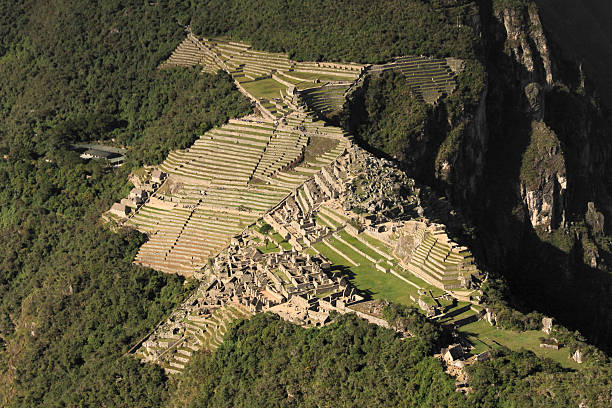
Some of the facts about Machu Picchu that are hidden gems and yet to discuss;
- Located more than 7,000 feet above sea level in the Andes Mountain.
- Machu Picchu in the Quechua Indian language means “Old Peak” or “Old Mountains”.
- The compound contains more than 100 separate flights of stairs. More number of individual staircases carved from a single slab of stones.
- Machu Picchu was considered as an Astronomical observatory and interestingly twice in a year sun directly over stones creating with no shadow.
- Most sacred sites of the Inca peoples were destroyed by the Spanish Conquests.
- Due to its ashlar techniques and trapezoidal shaped doors, windows and bracing blocs makes it one of the perfect sites for earthquake resistance.
- Some beliefs and scholars argue that Machu Picchu was built by the Aliens.
- There are numerous theories explaining its existence. Out of that a royal estate and secret ceremonial centers are famous.
- Interestingly during the constructions of Machu Picchu Inca peoples never used any mortar in its constructions.
- In 1911 one of the famous Yale university professors named Hiram Bingham rediscovered this site and published a book called “The Lost City of Incas”.
Angkor Wat Temple; 8th new wonders of the world.
Best Time to Visit to Machu Picchu

Machu Picchu truly a gem for history lovers and adventure tourist destination seekers witnessing year round landmark. So, it is not a big matter whether you are visiting in summer or winter.
Most of the tourists visit during the dry season which is from April to October. Even some of the tourists visit during June, July and August when the weather is so cool.
If you are a busy person and wish to visit Machu Picchu without any distractions you can visit even in April and May. When rainy months have just passed and winters are waiting to enrich the beauty of it.
Ticket Prices in Machu Picchu

Ticket price is based on the five different circuits which are set up by the ticketing systems. If you are visiting independently or organized tours better to hire one guide available outside the gates.
If you purchased a ticket well in advance you need to pay around $42 for adults and $20 for students or minors. While you book online you can see how many tickets are left, moreover visitors get an options to choose which circuit is needed for you.
Under Huyana Picchu tickets (Circuit 4 + Wayna Picchu Mountain). Under this section you can see Incas ruins with the section of strenuous trail that is very narrow and steep. Starting climb between 7 am to 10 am.
(Circuit 3+ Machu Picchu mountain), whose trails are almost entirely stairs. And you can start your trail from 7 am to 9 am. Keep in mind that before reaching this circuit you have to take a separate ticket to make a short walk to Inca Bridge (Circuit 1 or 2+ Inca Bridge).
Recently built route in 2021, Huchuy Picchu (Circute4 + Huchuy Picchu Mountain). Considered as the easiest and shorter route compared to other mountain hikes in order to get unique ancient Inca cities perspectives.
Where to Eat?

Another important thing every visitor shouldn’t miss to search is where to eat and what are the popular restaurants available nearby Machu Picchu? We strongly suggest you visit 2 major restaurants that are known for elegant designs with menus which offer mouth-watering delicious cuisines. 1. Restaurante Indio Feliz– known for serving original French-Peruvian cuisines. Another popular restaurant 2. Mapacho Craft Beer Restaurant serves local craft beers along with Peruvian dishes. Try to drink “Chicha”, a fermented cold drink and “Chicha Morade”, a sweet Peruvian drink made from purple corn.
How to get to Machu Picchu
1. By Air
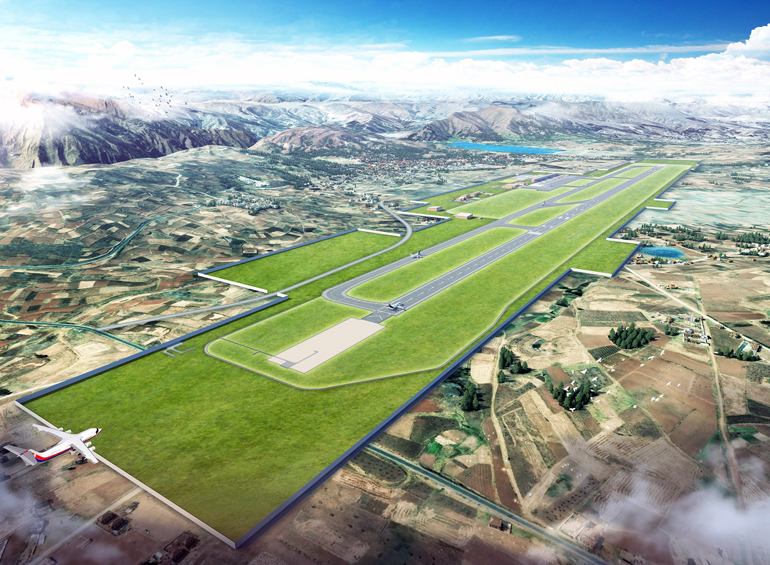
If you are an International traveler, then you should fly to Peru’s capital city called “Lima”. Then again you should take one more flight journey from Lima to ‘Cuzco’ (Around 1h 15m journey).
Cuzco is located in the base of the Andes Mountains southeast of Peru. Capital of Incas and well known for leaping off points for Machu Picchu and Sacred Valley. You can also reach Machu Picchu from Cuzco either by train or by trekking.
2. By Train
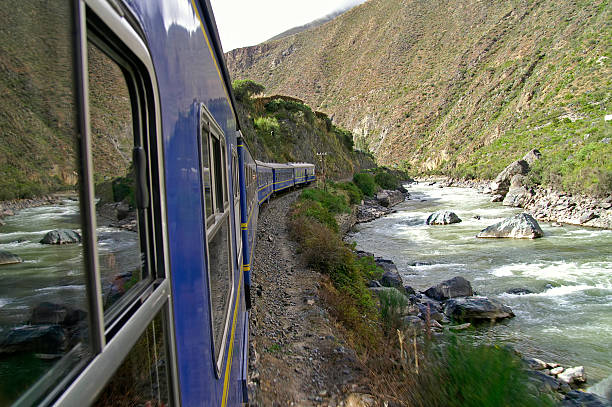
The easiest and convenient way of transportations is railway transportation. Train starting from Cusco to Machu Picchu is available, so you can even opt for bus transportation from Cusco railway station to the entrance of the site.
3. By Inca Trail
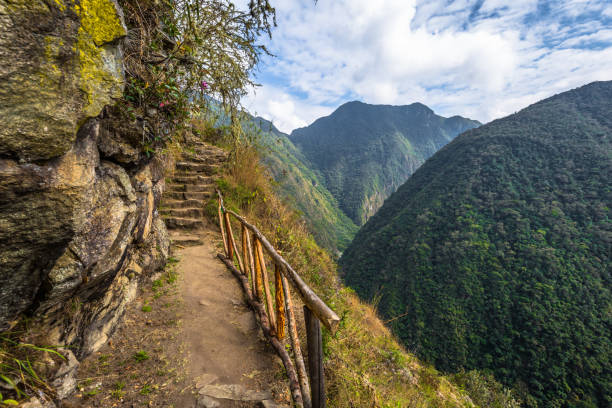
Hiking trail from ‘Camino Sagrado de los Incas to Machu Picchu’ offers around 24 or 26 miles required 3-4 days of journey. ‘Salkantay route’ 26 miles required 4 days.
Finally we come to know that, the exact purpose of Machu Picchu existence is still a matter of speculation, but it is perfectly believed and considered that it could be a royal estate or sacred religious site of the ancient Inca peoples. Its stunning setting, with its terraced fields and intricate construction techniques, and history continues to intrigue and create every traveler to inspire to visit from around the world.
Q: Where is Machu Picchu?
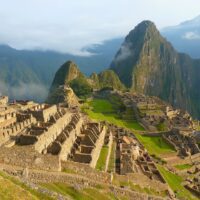
A: Machu Picchu is a 15th-century Inca citadel of Machu Picchu was located in the Eastern Cordillera of southern Peru on above the 2,430-metre mountain ridge. Above the 50 miles northwest of the Cuzco, Peru.
Q: Who built Machu Picchu?
A: As per archeologist believed that Machu Picchu built by the Inca Emperors Pachacuti between 1438-1472. But Inca site and estate built around 1450 AD.
Q: Why Machu Picchu is important?
A: Machu Picchu is still a matter of speculation, but it is perfectly believed and considered that it was a royal estate or sacred religious site of the ancient Inca peoples. Its stunning setting, with its terraced fields and intricate construction techniques, and history continues to intrigue and create every traveler to inspire to visit from around the world.
Q: When was Machu Picchu discovered?
A: In 1911 one of the famous Yale university professors named Hiram Bingham rediscovered this site and published a book called “The Lost City of Incas”. During his excavations he found ceramic vessels, silver statues, jewelry, and human bones taken back to his university for more research.
Q: When was Machu Picchu Built?
A: Machu Picchu has a very long historical background. As we know, such a great ancient site was built by the Inca peoples around 1450 AD.

